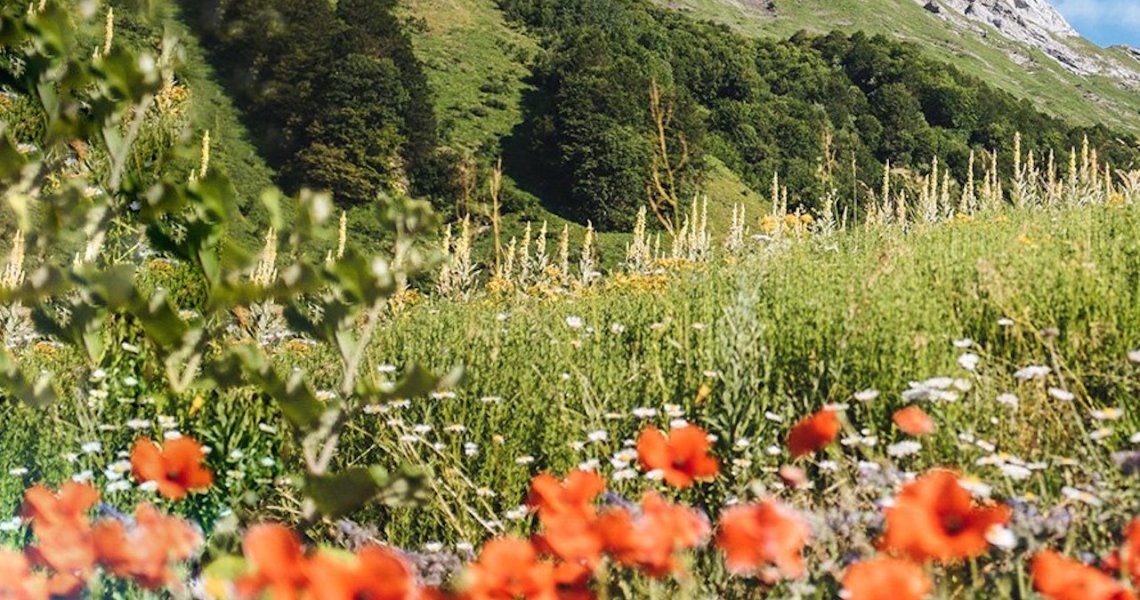The beauty industry has made collective and individual efforts to become more sustainable in 2020, and one area that has received significant attention sits is biodiversity.
Simply put, biodiversity is the variety of flora and fauna in a particular ecosystem. But in practice, biodiversity is the use of sustainable farming or harvesting practices that prevent environmental erosion and contribute to climate change. Sustainable practices include rotating crops to renew the soil, replanting trees and other plants, and relying on pre-industrial farming techniques. Given the beauty industry’s reliance on raw ingredients within a global supply chain, developing working regenerative models to profit and preserve the ecosystem is crucial to ensuring its future.
For example, in 2016 Clarins purchased a 200,000-acre area in the Alps, and publicly unveiled the area as Le Domaine Clarins in April 2019, to grow and study plants for the development of its skin-care and makeup products. At 4,500 feet, Clarins chemists work at a lab to develop new ingredients, such as Alpenrose extract or Houseleek extract. In December, Clarins launched three makeup removers using ingredients out of Le Domaine — they’re the first to feature ingredients from the area. To communicate its biodiversity efforts to the public, Clarins relies on its global Instagram account to regularly share photos of Le Domaine and close-up ingredient shots. Captions focus on biodiversity, origins of ingredients and scientific facts about ingredients. Communications around products that feature plants from Le Domaine are also woven into product narratives online and in marketing materials.
“The purpose of Le Domain is really to create vertical [supply chain ingredient] sourcing, and at the same time, to learn more about nature and biodiversity and protect it,” said Virginie Courtin-Clarins, Clarins deputy CEO and chief corporate social responsibility officer. “Ten years ago, customers didn’t really care about where products were made or where the plants were growing. And [the beauty industry] was less conscious about the environment. Customers want the brands to tell them [about the plants and plant origins].”
Le Domaine Clarins is part of Clarins’ 5-year sustainability plan, which includes reducing carbon emissions by 30% (Clarins is already carbon neutral), making all packaging recyclable, becoming plastic neutral and achieving B-Corp certification by 2023. Le Domaine will also help Clarins achieve 100% sustainable ingredient sourcing and traceability over the next five years, and shorten its supply chain. Le Domain only uses horse-drawn equipment to harvest ingredients, according to Courtin-Clarins, who declined to state the brand’s financial investment in Le Domaine.
Clarins is not the only brand to take over a large portion of land in order to use it for ingredient sourcing and protect biodiversity. Brazilian conglomerate Natura & Co. recently reevaluated its 10-year sustainability goals in June. They include expanding its preservation of the Amazon rainforest from 4.4 million acres to 7.4 million (equivalent to the size of Maryland), and increasing the number of communities it works with to source raw ingredients from 33 to 40. By expanding its preservation, Natura & Co seeks to prevent both legal and illegal deforestation according to Silvia Lagnado, Natura & Co sustainable growth officer. The Amazon rainforest is currently more 350 million hectares large, but 15-17% was lost due in part to the 2019 fires.
According to Alexandra Palt, L’Oréal Group chief corporate responsibility officer, the restoration of biodiversity can contribute up to 30% in reducing carbon emissions responsible for climate change. L’Oreal For the Future, the 10-year sustainability program from the company, includes commitments to biodiversity such as ensuring sustainably sourced raw materials in its supply chain and improving existing sourcing techniques. Palt said one of the key contributors to a loss of biodiversity is an expansion of land occupancy by people and farmland. Both L’Oreal Group and Natura & Co. typically use individual brands to share biodiversity efforts with consumers, with The Body Shop and Aesop taking the lead at Natura & Co while Garnier has emerged as a key brand for L’Oreal.
Ad position: web_incontent_pos1
L’Oréal Group also intends to contribute $50 million over the next three years to restore biodiversity. It’s working with impact investing fund Mirova to manage investment projects, such as restoring eroded coasts or peatlands in Southeast Asia.
“It’s essential that nature can play its role as a natural carbon sink,” Palt said. “This money will go to a fund that we created with Mirova to invest in projects that restore degraded lands — either forests or coastal land, in order to restore 1 million hectares. We would like to also show that there is a financing model that can work to restore biodiversity.”




